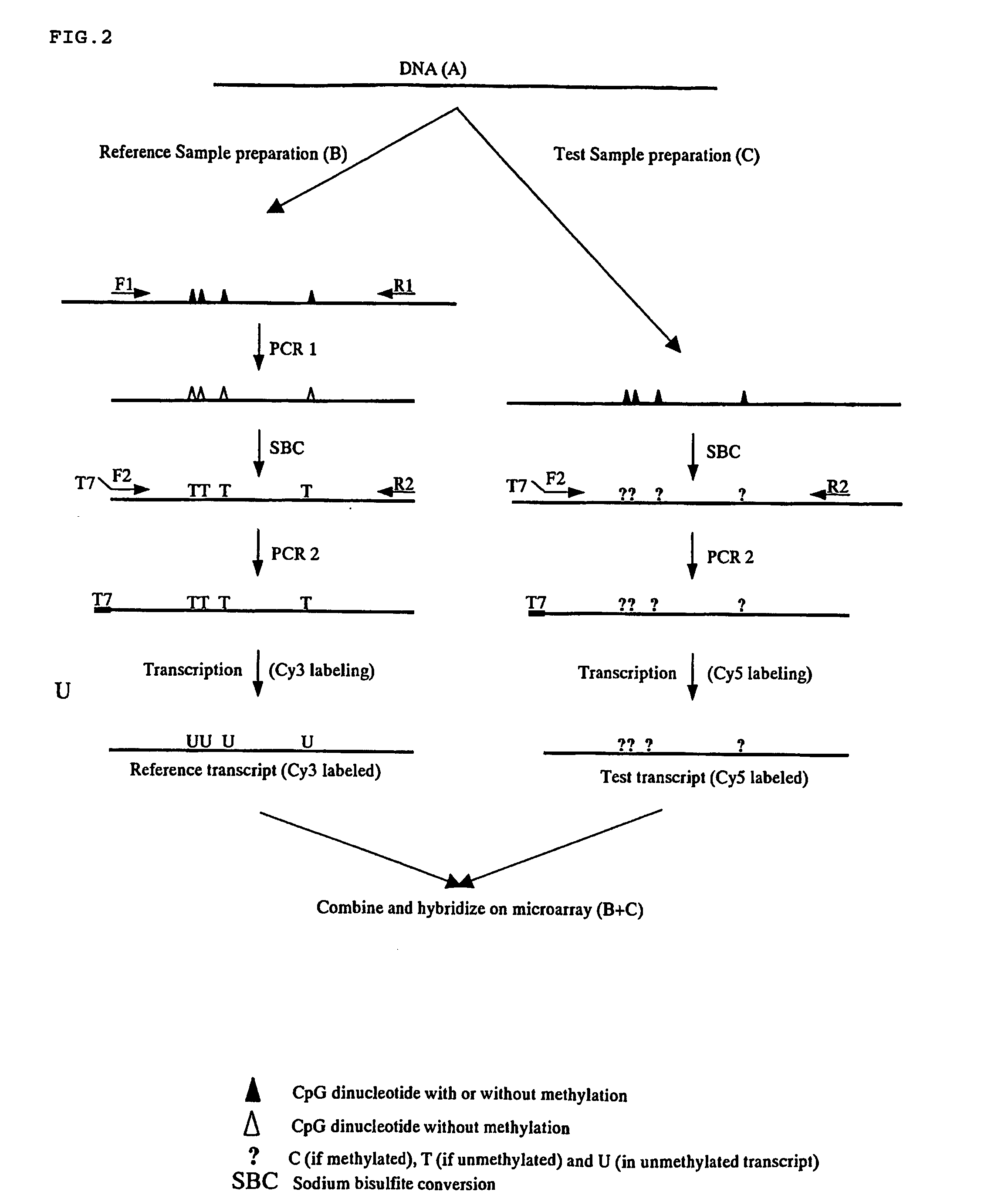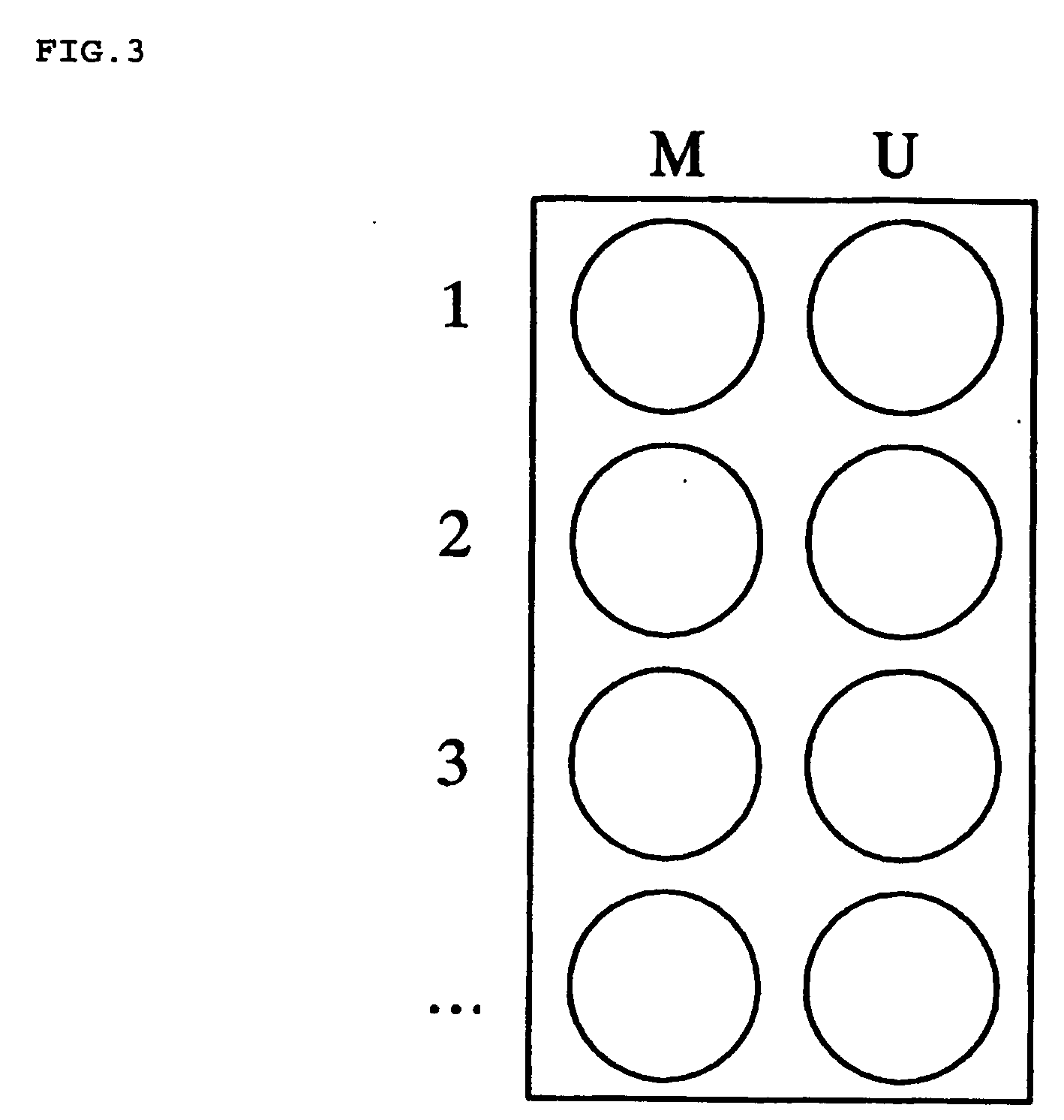Nucleic acid methylation detection process using an internal reference sample
a methylation and nucleic acid technology, applied in the field of dna methylation detection process, can solve the problems of partial denaturation, limited cleavage site, and less sensitive enzymatic/chemical techniques
- Summary
- Abstract
- Description
- Claims
- Application Information
AI Technical Summary
Benefits of technology
Problems solved by technology
Method used
Image
Examples
example 1
[0128] This example illustrates a multiplex methylation assay using the inventive procedure and a microarray device from CombiMatrix Corp. (made using in situ synthesis with an electrochemical process).
Sample Collection and DNA Purification.
[0129]Homo sapiens DNA mismatch repair (hMLH1) gene (GenBank ACCESSION U83845), a human primary colon carcinoma, cell line SW480 (purchased from ATCC; http: / / www.atcc.org / ), and 293T (purchased from ATCC) were used. DNA was purified as follows. The cells were cultivated, and were collected from dishes. The collected cells were washed in PBS three times. The washed cells were centrifugated, and stored at −80° C. Cell aggregates were suspended in reaction buffer, and were digested by proteinase K. After digestion, the aqueous phases were extracted with, a 1:1 mixture of equilibrated phenol and chloroform. DNA was recovered by 70% ethanol precipitation, and was suspended in pure water or TE (1.0 mg / mL).
[0130] Sequence being investigated:
5′atca...
example 2
[0155] This example performs the analysis of multiple CpG islands simultaneously using the procedure described in Example 1 for a single CpG island methylation determination. Signal intensities shown in FIG. 4 are analyzed by calculating the ratios for each probe in both the test and reference signal channels. For example, the first row of the microarray shown in FIG. 4 is designed to assess the methylation state of region 1 in a sample. The second row is designed to assess the methylation state in region 2 of the same sample, and so on. Each region in the sample may be methylated (M) or unmethylated (U). The sample is prepared as describe in Example 1. The sample being tested is used as its own internal reference control. Preparation of the reference sample removes any methylation that may have been present. The reference target is labeled with Cy3 fluorescent dye, for example, and its signal appears in the Cy3 detection channel. The test sample is processed so that methylation is ...
PUM
 Login to View More
Login to View More Abstract
Description
Claims
Application Information
 Login to View More
Login to View More - R&D
- Intellectual Property
- Life Sciences
- Materials
- Tech Scout
- Unparalleled Data Quality
- Higher Quality Content
- 60% Fewer Hallucinations
Browse by: Latest US Patents, China's latest patents, Technical Efficacy Thesaurus, Application Domain, Technology Topic, Popular Technical Reports.
© 2025 PatSnap. All rights reserved.Legal|Privacy policy|Modern Slavery Act Transparency Statement|Sitemap|About US| Contact US: help@patsnap.com



